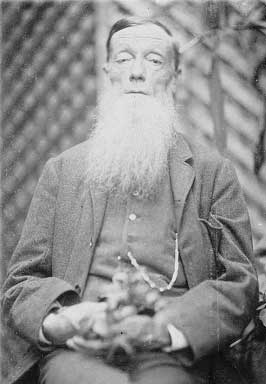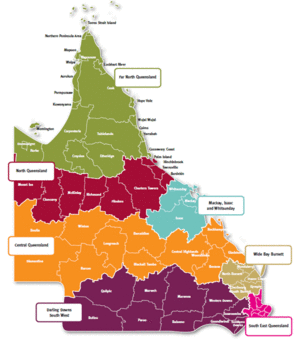Callitris baileyi facts for kids
Quick facts for kids Callitris baileyi |
|
|---|---|
| Conservation status | |
| Scientific classification | |
| Genus: |
Callitris
|
| Species: |
baileyi
|
Callitris baileyi is a special type of conifer tree, like a pine or a fir. It's part of the Cupressaceae family, also known as the cypress family. This tree is only found in Australia, mainly in a region called Southeast Queensland. Its common name is Bailey's cypress-pine.
The tree was named after a famous Australian botanist, Frederick Manson Bailey. He was the first person to collect samples of this tree. Over the years, this unique tree has faced big threats from habitat loss. This means its natural home is shrinking. You can find its fruits on the tree all year round.
Contents
What Does Bailey's Cypress-Pine Look Like?
Callitris baileyi is a tall, thin tree. It can grow up to 18 meters high, which is about as tall as a six-story building! It has rough, grayish bark and a green, leafy top.
Leaves and Branches
The adult leaves are green and about 25 millimeters long. They grow in groups of three, running neatly along the stem. The branches look like they have grooves. This is because the base of each leaf runs down the stem like a small wing.
Cones and Seeds
Both male and female cones grow on the same tree. This is common for conifers. The cones form on thin branches.
- Male cones are small, only 2-3 millimeters long. They appear at the very end of the branchlets.
- Female cones are larger, about 10-13 millimeters wide. They are oblong, which means they are a bit oval-shaped. When they are growing, they have a waxy, grayish-blue color.
The female cones are covered in small, narrow scales. Inside, they produce only a few seeds. These seeds have two unequal wings, which help them fly away in the wind.
Where Does Bailey's Cypress-Pine Live?
You can find Callitris baileyi in Southeast Queensland, Australia. It grows in more than ten different places. These areas stretch from the Queensland state border up to Goomeri in the north. It also reaches as far west as the Bunya Mountains.
Some smaller groups of these trees are found on private lands. For example, you can see them in Koreelah National Park. Sadly, many of these groups are now separated from each other. This is because their habitat has been broken up.
Past Locations
Callitris baileyi used to grow in New South Wales. It was found near Acacia Creek and Sandilands. However, it no longer lives in those areas.
Preferred Habitat
This tree grows on land, often on rocky slopes. It likes hilly or mountainous areas. The soil it grows in is usually shallow and often made of clay. It can be found across an area of about 15,000 to 25,000 square kilometers.
You will often find Callitris baileyi in eucalyptus woodlands. It commonly grows alongside trees like Ironbark, Blue Gum, and Spotted Gum. In New South Wales, the trees used to grow in open, grassy eucalyptus forests near creeks.
Why Is Bailey's Cypress-Pine Threatened?
The number of Callitris baileyi trees has been going down. Because of this, it is now listed as Near Threatened by the IUCN Red List. This means it could become endangered if we don't protect it.
Fire and Farming
One big reason for its decline is "inappropriate fire regimes." This means fires are happening too often or in the wrong way. People sometimes set small, frequent fires to clear land. This helps grass grow for cattle or farming. But these fires stop new Callitris baileyi trees from growing. Over time, this can make whole groups of trees disappear. This problem is worse outside of national parks.
Invasive Weeds
Another problem is invasive weeds. These are plants from other places that grow too much. They can take over the space where Callitris baileyi trees live. One example is Lantana camara, which is a problem in some parts of Queensland.
Conservation Efforts
People are working to protect Callitris baileyi. In New South Wales, the tree is listed as Endangered. In Queensland, it's listed as Near Threatened. This helps bring attention to its need for protection.
Callitris baileyi trees are found in several national parks. These include Bunya Mountains National Park in Queensland and Koreelah National Park in New South Wales. These parks help keep the trees safe.
Images for kids






